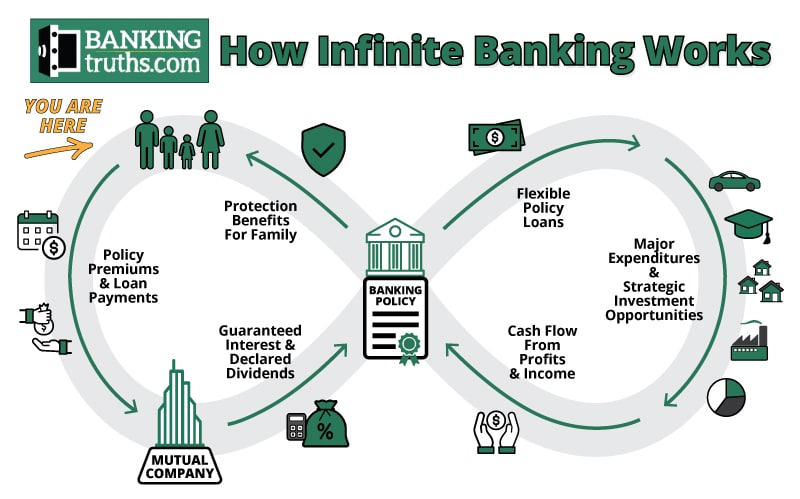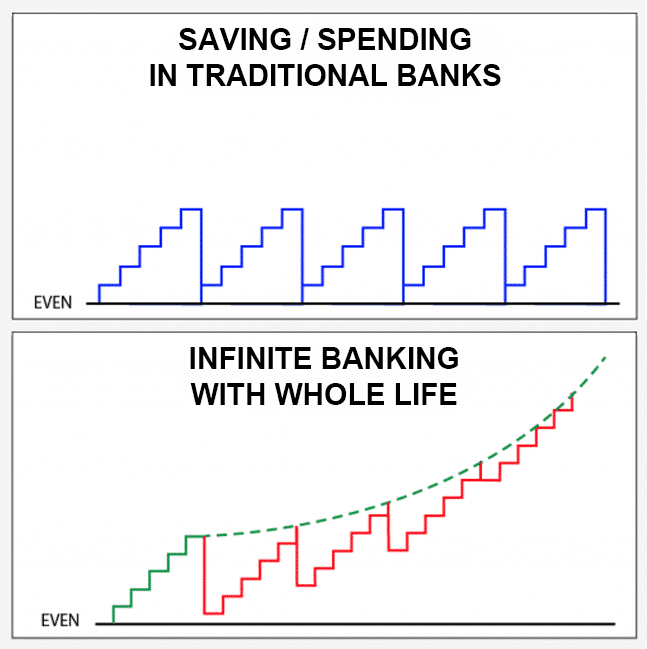All Categories
Featured
Table of Contents
The downsides of infinite financial are typically overlooked or not mentioned in any way (much of the details available regarding this principle is from insurance coverage representatives, which may be a little biased). Just the cash money value is growing at the reward rate. You likewise need to pay for the expense of insurance coverage, costs, and expenditures.

Every long-term life insurance policy is various, however it's clear a person's overall return on every buck spent on an insurance product could not be anywhere close to the returns rate for the plan.
Infinite Banking System
To offer an extremely fundamental and hypothetical example, let's think someone is able to earn 3%, on standard, for every dollar they invest on an "infinite banking" insurance policy item (after all expenses and fees). If we presume those bucks would be subject to 50% in tax obligations total if not in the insurance policy item, the tax-adjusted rate of return can be 4.5%.

We assume more than typical returns overall life item and a very high tax obligation rate on dollars not put right into the plan (that makes the insurance product look far better). The fact for several folks might be worse. This pales in contrast to the long-term return of the S&P 500 of over 10%.
Limitless financial is an excellent product for agents that market insurance policy, but might not be optimum when contrasted to the more affordable choices (without any sales people earning fat compensations). Below's a failure of a few of the various other purported benefits of boundless banking and why they might not be all they're gone crazy to be.
Infinite Banking System Review
At the end of the day you are acquiring an insurance policy item. We like the security that insurance policy supplies, which can be gotten a lot less expensively from a low-cost term life insurance plan. Unpaid loans from the plan may additionally minimize your fatality advantage, lessening another degree of protection in the policy.
The concept only functions when you not only pay the substantial costs, but make use of added cash to acquire paid-up enhancements. The opportunity price of all of those bucks is remarkable very so when you can rather be buying a Roth IRA, HSA, or 401(k). Also when contrasted to a taxed investment account or perhaps a financial savings account, infinite banking may not provide similar returns (contrasted to investing) and comparable liquidity, gain access to, and low/no fee structure (contrasted to a high-yield interest-bearing accounts).
With the rise of TikTok as an information-sharing system, financial guidance and approaches have located a novel method of spreading. One such strategy that has been making the rounds is the infinite banking idea, or IBC for brief, garnering recommendations from celebs like rap artist Waka Flocka Fire. Nevertheless, while the method is presently popular, its roots trace back to the 1980s when economic expert Nelson Nash presented it to the globe.

Within these policies, the money worth grows based on a price established by the insurance company. Once a significant money value gathers, insurance policy holders can acquire a cash money value financing. These fundings differ from traditional ones, with life insurance policy serving as collateral, meaning one might shed their insurance coverage if borrowing exceedingly without sufficient money value to sustain the insurance policy prices.
Own Your Own Bank
And while the appeal of these policies appears, there are inherent limitations and threats, necessitating diligent money value monitoring. The method's legitimacy isn't black and white. For high-net-worth people or local business owner, particularly those making use of strategies like company-owned life insurance policy (COLI), the benefits of tax breaks and compound development might be appealing.
The allure of limitless banking doesn't negate its obstacles: Expense: The foundational need, a permanent life insurance plan, is more expensive than its term counterparts. Eligibility: Not everyone gets approved for entire life insurance due to strenuous underwriting procedures that can leave out those with certain health and wellness or way of life conditions. Intricacy and threat: The complex nature of IBC, coupled with its risks, may deter several, particularly when simpler and much less high-risk options are offered.

Allocating around 10% of your monthly revenue to the policy is simply not practical for the majority of individuals. Component of what you check out below is just a reiteration of what has actually already been claimed above.
So before you obtain right into a situation you're not prepared for, know the following first: Although the concept is frequently offered as such, you're not in fact taking a funding from yourself - infinite banking concept pros and cons. If that were the situation, you would not have to repay it. Instead, you're borrowing from the insurance policy business and have to settle it with interest
Infinite Banking Concept Spreadsheet
Some social media blog posts suggest making use of money worth from whole life insurance policy to pay for charge card debt. The idea is that when you repay the finance with passion, the quantity will certainly be returned to your investments. Regrettably, that's not exactly how it works. When you repay the funding, a part of that passion mosts likely to the insurer.
For the very first a number of years, you'll be paying off the compensation. This makes it extremely difficult for your plan to build up value during this time around. Whole life insurance policy prices 5 to 15 times extra than term insurance coverage. Lots of people just can not afford it. So, unless you can manage to pay a couple of to a number of hundred bucks for the following decade or even more, IBC will not help you.
If you require life insurance coverage, right here are some useful tips to consider: Think about term life insurance. Make certain to go shopping around for the best price.

Infinite financial is not a product and services provided by a specific establishment. Limitless financial is a technique in which you get a life insurance policy that gathers interest-earning cash money value and take out financings versus it, "borrowing from on your own" as a resource of funding. At some point pay back the loan and begin the cycle all over once again.
Pay policy premiums, a part of which constructs cash worth. Cash worth gains compounding interest. Take a loan out against the plan's cash money value, tax-free. Pay back lendings with passion. Money value accumulates once again, and the cycle repeats. If you use this principle as planned, you're taking money out of your life insurance policy policy to purchase every little thing you 'd need for the rest of your life.
Latest Posts
Infinite Financial Systems
Become Your Own Bank Whole Life Insurance
Private Banking Concepts